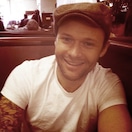Born to Run is the new memoir from Bruce Springsteen, released today from Simon & Schuster. At just over 500 pages long and broken up into 79 chapters (!), it features Springsteen reflecting on everything from growing up in New Jersey to buying his first guitar to touring the world as one of the biggest musicians on the planet. Below, here are five things we learned from Born to Run.
He bought his first guitar from an auto parts store
Springsteen bought his first guitar for $18 by working as a “lawn boy,” cutting grass for 50 cents an hour. It was, as he tells it, a “funky brown model” from the Western Auto store, which specialized in auto parts and cheap guitars.
After receiving some lessons on the basics from a family friend — to this day, he still can’t actually read music — young Bruce managed to “put together the C, F and G chords that allowed me to play ‘Twist and Shout.’ This was my first rock 'n' roll song,” he writes. “It was goodbye to lawn boy and the only real job I would hold my entire life."
Springsteen was being cheap when he recorded Nebraska
Nebraska is easily one of Springsteen’s darkest albums, a collection of stories about criminals, murderers and never-do-wells. In his book, Springsteen says the album was inspired by Bob Dylan, Woody Guthrie, Hank Williams, gothic writer Flannery O’Connor and the “quiet violence of the films of Terrence Malick,” as well as the 1955 film noir The Night of the Hunter.
Frustrated at spending all his money on studio time — and wanting higher-quality demos — Springsteen bought a four-track Japanese Tascam 144 cassette recorder and put together the demoss that would become Nebraska in his bedroom, using two tracks for vocals and guitar, the other two for backing vocals, an extra guitar or a tambourine. “On four tracks, that’s all you could do,” he writes. After bringing the full band in to record the songs and listening back, “I realized I’d succeeded in doing nothing but damaging what I’d created,” he writes. “I pulled out the original cassette I’d been carrying around in my jeans pocket and said, ‘This is it.”
The cost of that now classic album: $1,000.
He blatantly stole the title for ‘Born in the U.S.A.’
When Springsteen was tasked to write a song to follow up "Nebraska," he wanted to reach a more mainstream audience while still covering some of the darker elements of American society. He had a few verses about vets returning home after the Vietnam war, but not much else. At the same time, he had been sent a film script by Paul Schrader, who had directed Taxi Driver and Blue Collar. The new film was about the trials and tribulations of a Cleveland rock band.
“I glanced over at the unread script’s cover page and sang out its title,” Springsteen writes. “I was ‘Born in the U.S.A.’”
Recorded in just two takes, Springsteen knew exactly what he had on his hands: “When I heard it thundering back at me through the Hit Factory’s gargantuan studio speakers, I knew it was one of the best things I’d ever done.”
The film by Schrader was eventually released as Light of Day, starring Michael J. Fox and featuring a song by Springsteen of the same name. “My polite attempt at paying Paul back for my fortuitous and career-boosting theft,” he writes.
Travelling the world on the Human Rights Now tour was one of his most nerve-wracking experiences
In 1988, right after the release of two gigantic albums, Born in the U.S.A. and Tunnel of Love, Springsteen and the E Street Band were invited to join the Human Rights Now tour, a string of 20 benefit concerts on behalf of Amnesty International that travelled the globe in a period of six weeks, from Argentina to Japan. On the bill were Sting and Peter Gabriel as headliners, joined by acts such as k.d. lang, Joan Baez and more. It included a stop at Toronto’s Maple Leaf Gardens, but for Springsteen, playing Cote d’Ivoire was one of the greatest, and most nerve-wracking, concerts he’s ever experienced. One reason being that the band had never played to a stadium audience that was primarily black. “We were one black man and seven white folk from New Jersey,” he writes. “Was this gonna work?”
The band kicked it off with “Born in the U.S.A.,” as one does, and as he writes it: “time … crept to a standstill … then … BOOM! The place exploded into a frenzy.” All his uncertainties disappeared, and he describes the concert as “the most joyful mutual celebration of discovery I’ve ever experienced.”
Clarence Clemons is a god in his eyes
Springsteen’s memoir is broken up into many, many small chapters, no more than a few pages, each one a recollection or memory of some sort. Most cover a certain period in his life or an album or key career moment, but one focuses on Clarence Clemons, the E Street Band saxophone player who died in 2011, and a dear friend of Springsteen’s.
He parses no words in describing the “Emperor of E Street,” a man, it becomes apparent, of whom he's in awe. “It’s hard to imagine that Clarence was once a normal person,” Springsteen writes, going on to describe him physically as such: “he had a face that would look at home at any point in history. It was the face of an exotic emperor, an island king, a heavyweight boxer, a shaman, a chain-gang convict, a '50s bluesman and a deep soul survivor. It held one million secrets and none at all.”
More to explore:
Bruce Springsteen memoir Born to Run takes readers on riveting ride
Bruce Springsteen: our 10 favourite songs
Watch Bruce Springsteen read an excerpt from his Born to Run memoir

